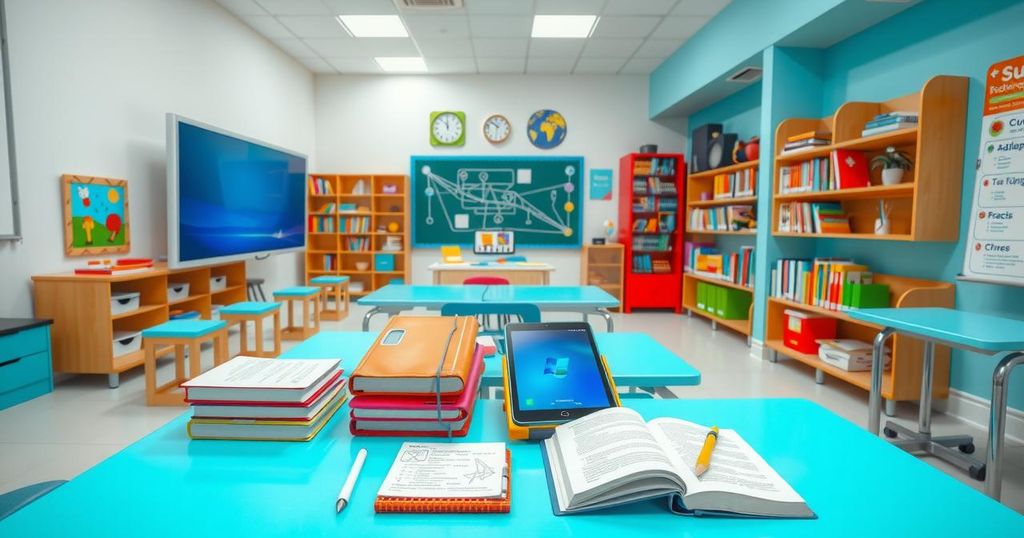Artificial Intelligence: A Teacher’s Best Friend in the Classroom
AI is transforming education by enhancing teaching methods and personalizing student learning. Teachers are using AI tools to analyze student performance, automate tasks, and provide tailored instruction. Despite its usefulness, the essential role of teachers remains irreplaceable, as human connections foster effective learning environments.
Artificial Intelligence (AI) has officially landed in classrooms across America, and surprisingly, it’s actually beneficial. Sounds a bit futuristic, right? But it’s true—AI is reshaping how educators teach and how students learn. With AI-powered tools, lessons can be tailored for individual needs, and teachers can analyze performance data with greater ease. Plus, they help automate those monotonous tasks, freeing up time for teachers to focus on what they really do best.
But don’t worry, folks—AI isn’t here to take over teaching altogether. The role of a teacher today goes way beyond just imparting knowledge. AI can lighten the load by tackling some of the administrative work, giving educators more space to focus on delivering quality instruction. However, it’s crucial to recognize that building a nurturing, supportive environment is something only a human can do. The personal connections that teachers establish are integral to effective teaching, and AI simply can’t replicate this special human touch.
Rounding up figures from a recent Forbes survey, it turns out that 60% of teachers have already started using AI in their classrooms, and quite a few of them—about 55%—report that it’s led to better educational outcomes for their students. One common pitfall, though, has been relying on periodic tests, leaving teachers with gaps in data regarding performance for months on end. That’s where innovative technology like Lexia’s AI-driven Assessment Without Testing comes into play. It regularly tracks students’ progress, helping teachers pinpoint where students thrive and where they might struggle.
Moving forward, we can expect a landscape that’s increasingly more tech-savvy in schools, but it’s essential to keep in mind the role of skilled teachers tasked with using this technology to foster student growth. Jen Russ, a seasoned English teacher from New Jersey, sees potential in leveraging AI in the classroom. “My favorite use of AI so far has been using it to draft essay and narrative exemplars for kids,” she shared. “If I want kids to analyze it, I can ask the AI to add specific types of errors.”
While Russ does acknowledge that AI can help with some teacher burdens, she’s wary of expecting it to make up for funding cuts. She utilizes a program called Lexia PowerUp to bridge literacy gaps. “It does the job about as well as a computer can possibly do. That said, it still relies on a teacher interpreting data and meeting one-to-one with a student.” Carl Hooker importantly adds that students remember their passions much more than they recall basic worksheets or tests.
Integrating technology in the classroom opens doors for more tailored instruction. By honing in on students’ strengths and guiding them through meaningful collaborative digital experiences, the potential is massive. Instructional Technology in Action research indicates that nearly all students can learn to read when armed with effective, evidence-based curricula throughout the teacher-led learning process. The key? Combining constant diagnostics—quietly monitoring progress without intrusive testing—and creating learning opportunities that cater to students’ unique needs, all aimed at keeping them within their ideal zone of learning.
In summary, AI is not about replacing teachers but rather enhancing their ability to teach effectively. Teachers are leveraging AI for personalized learning, overcoming the challenges of outdated data gathering methods, and producing better educational outcomes. As educational technology evolves, the irreplaceable human connection remains central to the educational journey. While AI tools can streamline tasks and facilitate learning, they can never substitute the empathy, understanding, and nurturing environment that only a dedicated teacher can provide.
Original Source: www.mynewstouse.com




Post Comment